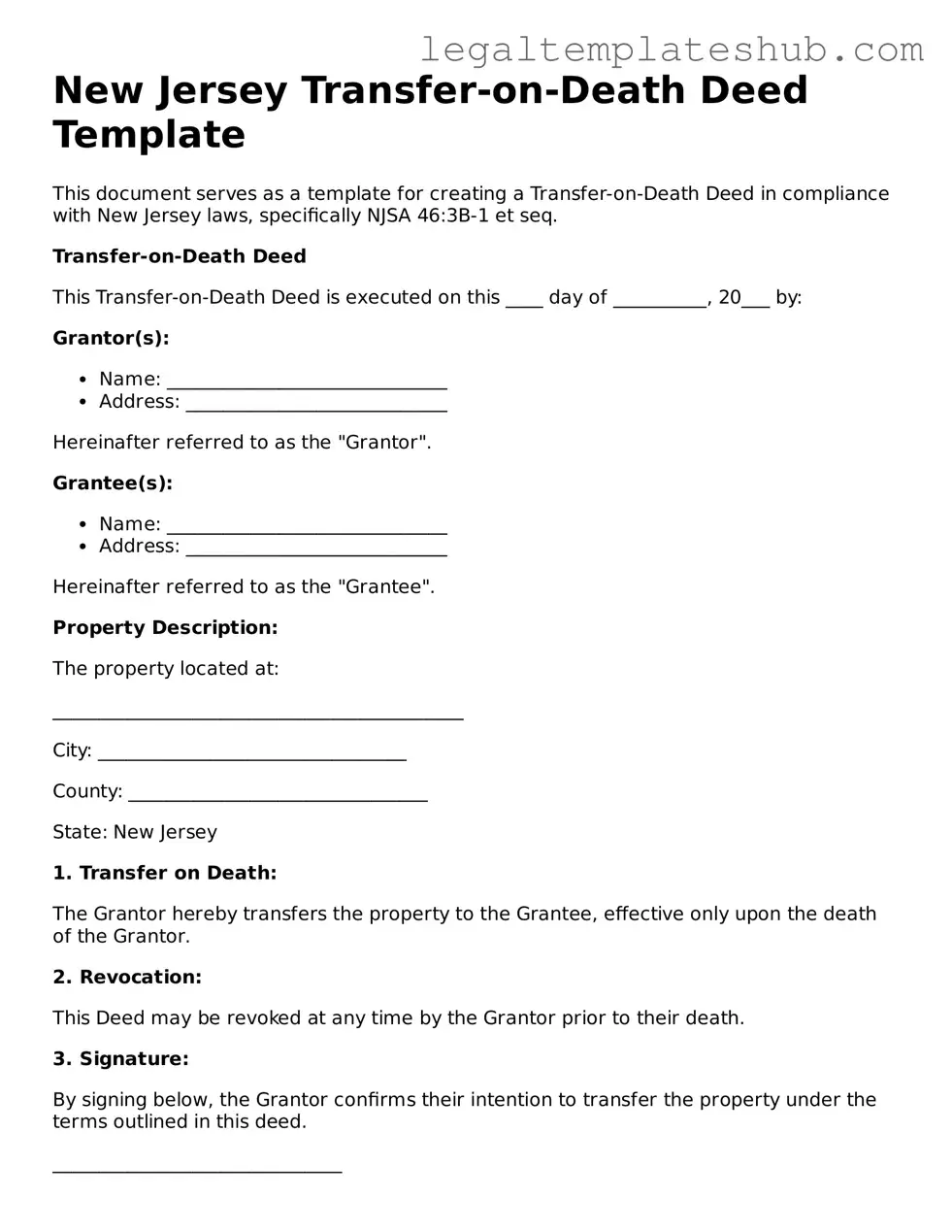Printable Transfer-on-Death Deed Document for New Jersey
The New Jersey Transfer-on-Death Deed form allows property owners to transfer their real estate assets directly to beneficiaries upon their death, bypassing the probate process. This form provides a straightforward way to ensure that your property is transferred according to your wishes without the complications often associated with inheritance. To take the next step in securing your legacy, fill out the form by clicking the button below.
Access Editor
